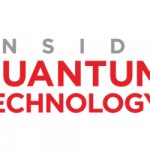UPDATED: AWS claims major quantum networking research advancement

UPDATE 11/4/2022: Here’s a link to the paper discussed below. The story also has been updated to include more comments from Levonian about entanglement-based quantum networks, as well as more details about how researchers worked on this project.
Amazon Web Services is behind one of the biggest cloud-based quantum computing services, but AWS also has been making contributions to the field through research. Its most recent research advancement, to be detailed in a paper scheduled to be published Friday in the journal Science, could have major implications for the evolution of quantum networks.
Scientists from AWS’s Center for Quantum Networking, which was launched earlier this year, and Harvard University, have developed a method for allowing quantum memories to operate at higher temperatures, which could reduce the costs of ultra-cool refrigeration usually required to keep memories very cold, and improve the performance and reliability of quantum repeaters needed to extend networking distances.
Researchers, including research paper authors David Levonian, Bart Machielse, YanQi Huan, and Pieter-Jan Stas, were able to “boost the operating temperature to something that makes your cryo systems about 10 times cheaper and smaller than they otherwise would need to be, and that really starts to move it [quantum memory] towards something that could be in a rack in a data center,” Levonian told IQT News.
He emphasized that much more needs to be done before this kind of advancement can be commercialized and before entanglement-based quantum networks using quantum repeaters can become widespread, as much work related to quantum networks, and more specifically to quantum repeaters, remains in a lab setting for now.
“The next steps, and I wouldn’t put a timeline on it, would be setting up networks of these repeater devices to show that you can set up a multi-hop QKD network with a couple of different users across distances that you wouldn’t be able to achieve with what’s available off the shelf now,” he said.
Levonian acknowledged, despite not being specific about AWS’ timeline for next steps, that the advancement could help accelerate the overall timing for deployment of entanglement-based QKD networks. and other entanglement-based quantum network applications, such as quantum clouds and quantum sensor networks. At last week’s IQT Fall conference there was a great deal of discussion about the viability of prepare-and-measure QKD relative to the eventual development of entanglement-based networks, and it was clear from these discussions that several companies are pursuing and further developing both models as entanglement-based architectures continue to mature and improve.
“I would say [this kind of advancement] does push up the timeline [for development of new entanglement-based networks and applications],” Levonian said. “In some ways, I think when people talk about roadmap, and what’s near versus long term, there are a lot of different applications that you can use quantum networks for. So QKD is something that people are doing now, and the ability to do more, it’s really just a question of sort of increasing that range, and bringing new capabilities. I think when people think of quantum networks, there are some other cool applications that they think of that are also very demanding of the network and that are… five or 10 years down the road.”
Levonian, who was a graduate research assistant at Harvard before joining AWS as in 2021 as a quantum research scientist, also provided a glimpse how the science and engineering work that enabled this advancement played out–and it did not all have to do with quantum: “What the team employed by AWS did was fabricate and design the devices used for this experiment,so a fairly really large chunk of the work there…. but there’s a bunch of work that’s been done on photonics over the past couple of decades, and what we did build this system, was take a little bit of quantum–his ability to drop these silicon defects into material that can store quantum information–but really a lot of the stuff that gets wrapped around it is really cool science and engineering about how to guide light and switch it between different things that was developed for other reasons 10 or 20 years ago. We have the advantage of being able to take advances that people made back then and repurpose them towards building these quantum communication systems.”
He added, “To give you some sense of the size [of the team involved] there are people who focus on building these devices–nano fabrication–going into a cleanroom, and doing that etching and photo lithography and photonics design. That’s a team of two or three people… At Harvard, there happens to be a group.. that focuses on that specifically… And then there’s the people who build all of the the automation and the optics and the electronics that get wrapped around this and [also] do the quantum physics theory stuff as well. So I’d say it’s about evenly split with groups of like three or four people working on each thing. It’s quite a complicated process, and that is one reason why I think it makes sense for it to move out of the lab and be done as part of corporate R&D. Besides, of course, the potential for really useful things to be developed for our customers is, it’s really on the cusp of what you can do as an academic group.”
Watch IQT News closely for further updates to this story.
Image: A scanning electron microscope image (courtesy of the AWS Center for Quantum Networking) of an array of nanophotonic quantum memories on a diamond chip. The photonic devices are millionths of an inch wide.
Dan O’Shea has covered telecommunications and related topics including semiconductors, sensors, retail systems, digital payments and quantum computing/technology for over 25 years.























